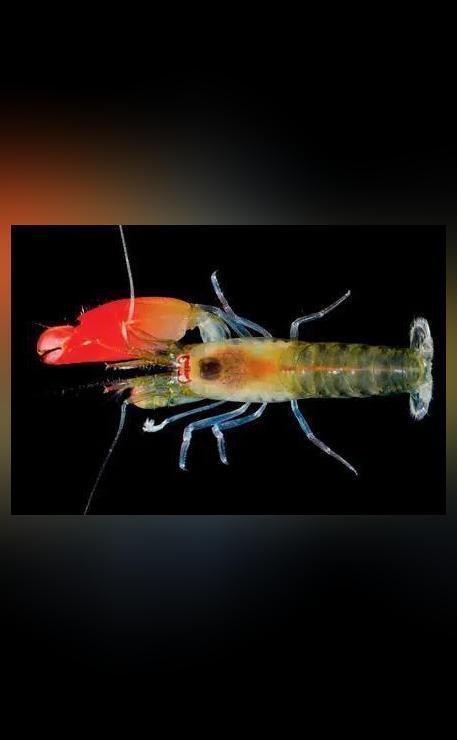
How does a pistol shrimp shoot bubbles at nearly 100 km/hr?
In the world of marine biology, there are many fascinating creatures that have evolved unique ways to survive and thrive in their environments. One such creature is the pistol shrimp, also known as the snapping shrimp. This small crustacean has gained attention for its remarkable ability to shoot bubbles at nearly 100 kilometers per hour (km/hr). But how does it do it?
The pistol shrimp is a small to medium-sized shrimp, typically ranging from 1-5 centimeters in length. It has two claws, one larger than the other, which it uses to snap and shoot bubbles at incredible speeds. The larger claw is modified to form a pincer-like structure that can snap shut with incredible force, generating a shockwave that propels the bubbles through the water.
The process begins when the pistol shrimp contracts its muscles to snap the larger claw shut. This sudden movement creates a powerful shockwave that travels through the water at the speed of sound, which is approximately 1,480 meters per second (m/s) or 343 meters per second (m/s) at sea level. The shockwave is so powerful that it can stun or even kill prey, making it an effective hunting tool for the pistol shrimp.
But what’s truly remarkable about the pistol shrimp’s ability is that it’s not just a simple case of shockwave propulsion. The bubbles themselves are created through a phenomenon called sonoluminescence, which involves the energization of water molecules by sound waves. When the pistol shrimp snaps its claw, it creates a series of high-frequency sound waves that compress and then expand the water molecules around it.
This compression and expansion creates a bubble of water that is filled with hot, ionized gas. The bubble is then propelled through the water by the shockwave, allowing it to reach speeds of nearly 100 km/hr. But what’s even more impressive is that the bubble itself can reach temperatures of up to 4,400 degrees Celsius (7,832 degrees Fahrenheit), which is almost as hot as the surface of the Sun.
The process of sonoluminescence is not unique to the pistol shrimp, but it is one of the most extreme examples of this phenomenon in nature. Other creatures, such as certain types of jellyfish and squid, have also been observed using sonoluminescence to create bioluminescent displays. However, the pistol shrimp’s ability to shoot bubbles at such incredible speeds and temperatures is truly unique.
In addition to its impressive hunting abilities, the pistol shrimp’s snapping behavior has also been observed in other contexts. For example, some species of pistol shrimp have been observed using their snapping abilities to communicate with other members of their species. The snapping can be used to signal aggression, courtship, or even warning calls to other pistol shrimp.
The pistol shrimp’s snapping behavior has also been studied by scientists as a way to better understand the physics of sound waves and their interactions with water. The snapping shrimp’s ability to create such powerful shockwaves and high-temperature bubbles has potential applications in fields such as medicine, materials science, and even propulsion technology.
In conclusion, the pistol shrimp’s ability to shoot bubbles at nearly 100 km/hr is a remarkable example of the unique adaptations that have evolved in the natural world. The combination of sonoluminescence, shockwaves, and powerful snapping behavior allows the pistol shrimp to hunt and communicate in ways that are unmatched by most other creatures. As scientists continue to study the pistol shrimp and its remarkable abilities, we may uncover even more secrets about this fascinating creature and the incredible world of marine biology.
News Source:






